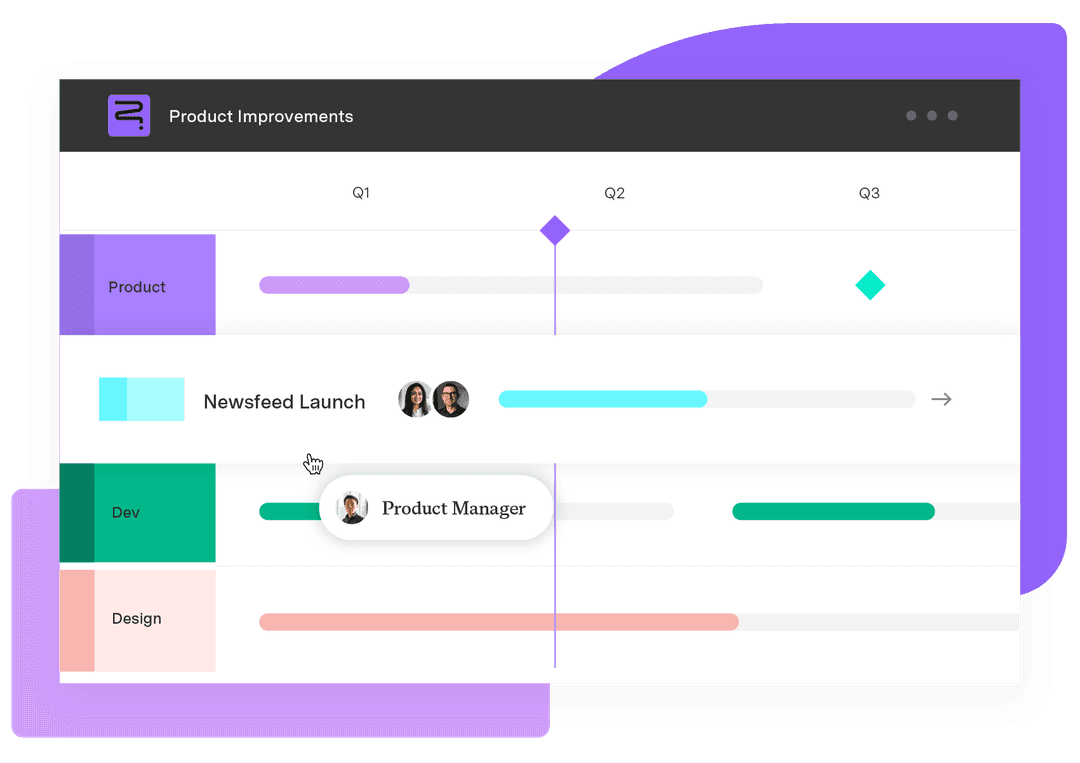9 ways to foster an agile mindset and culture
Tempo Team
The agile approach is a popular project management methodology that’s become a buzzword among the masses. People are applying it to everyday life, using its organizational and planning techniques to power through daily tasks.
While it’s great that so many have found something to admire in the agile way of working, some have strayed from the original ideas due to deep-seated habits and comfort with the status quo. If you aim to foster an authentic agile mindset among your team, you’ll have to get back to the basics – interpreting the methodology’s core tenets.
In this guide, we’ll discuss what an agile mindset is and how your team can implement agile principles in their thinking, work, and culture.
What is an agile mindset?
The agile project planning methodology started with 12 principles. The original agile manifesto highlighted ideas like welcoming change, favoring simple processes, and giving people tasks they could do well. These principles support the methodology’s central aims of project efficacy, teamwork, and flexibility.
Teams with an agile mindset – even if they don’t religiously follow the traditional tenets – must work as an adaptable unit that balances member autonomy and collaboration.
Agile teams must inherit four values into their mindset well. These values are:
Practicing respect between members
Optimizing work whenever possible
Promoting innovation
Focusing on continuous improvement
9 ways to foster an agile culture and mindset
In an agile environment, teams react efficiently in the face of change, create high-quality deliverables, and thrive on members’ unique skills. But becoming agile doesn’t happen on its own. Here are nine ways to foster a more agile culture and mindset among collaborators:
1. Promote transparency
The agile framework thrives on transparency. When team members speak about issues or needs, managers quickly help resolve them and keep work moving.
However, when people silo information or hold back comments, problems take longer to surface (and spur project errors and delays). Daily stand-up meetings, sprint reviews, and retrospectives are excellent forums for encouraging employees to share their insights readily.
2. Make it personal
If you’re in a leadership role at an agile organization, you must help your teammates understand its importance and its inner workings. Stating that you’ll embrace more agile practices without giving people the information and tools to implement them won’t change much.
Instead, introduce each team member to the new meetings on their calendar (like stand-ups) or task-tracking software and explain their importance. Resolve questions before teammates start using new tools or adopting agile practices so they don’t find themselves in a fix.
3. Encourage continual learning and improvement
Any problem is an opportunity to learn, which agile teams should sincerely consider. At the end of any sprint or project, invite team members to share what they’ve learned and offer improvements. Even when a project delivers excellent outputs, there’s usually something to critique to better the following product.
Leaders receiving feedback must do more than listen – they should also act. When team members notice that their managers take their ideas seriously, they feel more confident in offering more in the future. If a developer recommends creating a feature differently next time, implement this expert advice. That developer will more likely continue sharing savvy ideas to improve work.
4. Be a new kind of leader
Agile leaders should embody the principle of collaboration rather than positioning themselves “above” their team members. In an agile setting, project managers, developers, and user experience (UX) designers are equally integral to the team, each bringing their expertise to the table. Developers write code, UX designers make user-friendly features, and project managers allocate tasks, plan work, and resolve blockers.
This leadership style gives each project participant more agency, fostering accountability and confidence through mutual respect and support.
5. Procure the right tools for the job
Countless shared virtual tools support agile work, and all teams should use them to prevent information siloing and improve efficiency. Invest in tools that allow you to create workflows, allocate resources, and enable seamless communication between team members and different departments. Agile software helps people collaborate, find information when needed, and stay more connected to progress and priorities. Plus, these tools create “single sources of truth” – a central resource that includes the most accurate and updated project data.
6. Foster a sense of ownership and accountability
Agile teams are self-organizing, meaning they distribute their workload and create plans for reaching project goals (with a project manager’s guidance). Working this way fosters responsibility and accountability. If you’re a leader, help reinforce those traits. For example, never punish mistakes, look at errors as learning opportunities, and celebrate team wins, motivating members.
Leaders who create an accountable and trustworthy environment help team members feel comfortable admitting mistakes, grow from them, and ultimately become more knowledgeable and confident. Teammates also feel more tied to project objectives as they see how their setbacks and wins affect their work.
7. Keep communicating
An agile approach only works when information is visible to all. Place your project goals, important documents, plans, and tasks in a central place. This way, everyone can see work progress and visualize their role.
Also, hold frequent meetings – even for just five minutes each morning – to keep everyone in the loop and provide team members an avenue to voice blockers and insights, promoting efficient workflows. Recurring meetings also ensure transparency, ensuring everyone knows what others are doing and reminding them of the larger project objectives.
8. Welcome feedback
Feedback is central to agile processes, as it helps teams fix errors and work more smoothly – which leads to cleaner sprints and better end results. While team members will often speak up in an agile environment, leadership shouldn’t depend on unsolicited insights.
Gather data through surveys, in-person interviews, and suggestion boxes. Finally, act upon insights so teammates can see that their input was taken seriously and feel encouraged to keep sharing.
9. Determine future changes
Agile not only helps organizations change everyday ways of working but is also a tool for shifting larger outdated or inefficient processes. Decide which organizational alterations you hope to foster with agile. Set starting points (where your organization is now) and endpoints (where the organization wishes to go).
For example, your company might have top-down leadership now (starting point) but aims to have more inclusive, collaborative teams (ending point). Implementing agile will help you make this shift, and you can track your progress toward the goal.
Benefits of being agile
At agile organizations, teams share a methodology and mindset that centers on delivering value to end users, collaborating, and creating high-quality outputs. Agile organizations embrace complex and unpredictable projects by adopting fast-paced learning and decision-making cycles. In doing so, agile teams respond to rapidly evolving marketplaces and customer needs.
Here’s how organizations benefit from implementing agile processes and mindsets:
High revenue: Successful transitions to agile frameworks result in better projects, customer satisfaction, and, in turn, higher profits.
Increased engagement: Agile teammates gain agency and connectedness to projects. This boosts employee engagement, retention rates, and company loyalty.
Better resilience: Organizations that practice agility can quickly react to changing marketplaces and new technologies. They adapt to challenges instead of getting stuck, continuously building resilience to turbulence.
Enhanced productivity: Increased project visibility and real-time result-tracking help teams predict delays, remove blockers, and keep work on track. Agile projects are, therefore, more productive than their siloed counterparts.
An agile mindset is important, but so is the methodology
Agile mindsets and methodologies work hand-in-hand, and you can’t have one without another. A team that “feels” flexible, adaptable, and collaborative isn’t actually any of those things if members don’t have the tools and processes to support their instincts.
Also, teams can have the right tools, like shared task boards and stand-up meetings, and not be agile. That’s why it’s essential to help people establish a connection and balance between tools and efficient, collaborative work to produce remarkable results.
How Tempo can help you achieve an agile mindset
Use Tempo's project planning tools to help your team align their agile mindset with everyday processes. Use Strategic Roadmaps to create shared audience-friendly roadmaps, track timelines with Portfolio Manager using predictive scheduling, and create custom charts to meet your team’s needs. Your team will work more collaboratively, visualize progress in real time, and never silo again.
Sign up for a demo
Register













































